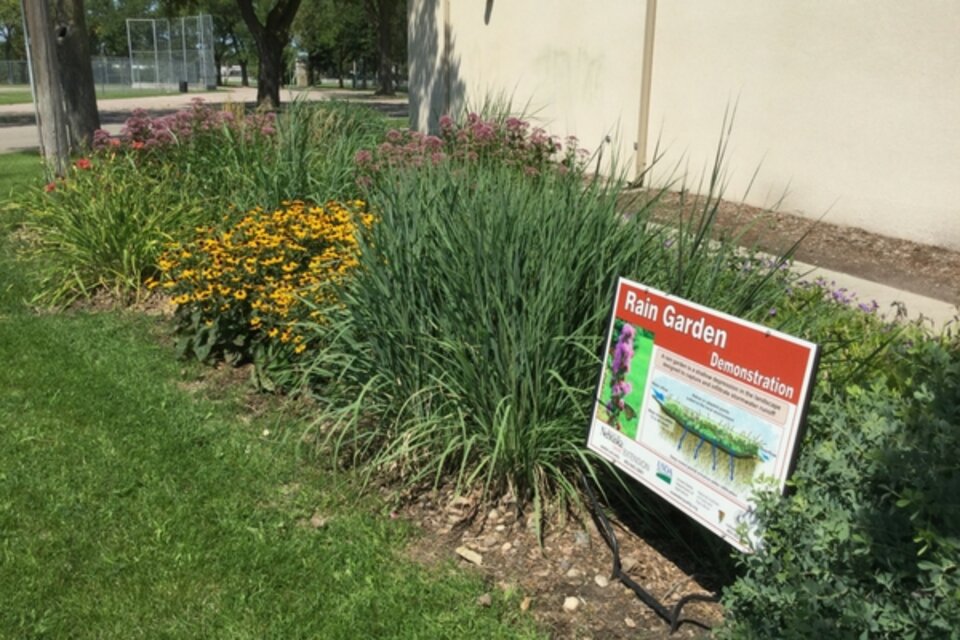Rainwater Harvesting in Residential Scale Landscapes

When it rains, do you know where rainwater from your property goes? Does it spread out and soak into the lawn or landscape beds to recharge soil moisture and benefit plants; or does it run off into the street and down a storm drain where it often transports pollutants to surface water?
Make the most of rainfall by considering rainwater harvesting methods. For some, this may only mean installing a rain barrel or cistern to catch and store rainwater for later use. However, rainwater harvesting can also mean slowing and redirecting rainwater to a greenspace where it will infiltrate soil and be stored for immediate use by plants.
Using greenspace to capture and infiltrate rainwater can be as simple as directing downspouts to planted areas; or it can be more involved such as constructing small drainage channels (swales) to direct rainwater to planted areas to installing a rain garden.
A swale is a shallow, gently sloped channel used to convey and infiltrate rainwater. Swales may be lined with vegetation like turfgrass or with gravel or rocks (dry stream bed). They are designed to slow runoff water velocity, trap sediment and other contaminants, and promote infiltration. Swales can be used to direct rainwater into a rain garden.
A rain garden is an ornamental garden planted into a shallow depression designed to hold water for a short time (12-48 hours) before it drains away. Rain gardens typically have berms on three sides and are located where rainwater from a roof, lawn or pavement can be easily directed into them.
Water collected in properly designed rain gardens will infiltrate into soil for up to 90 percent of all rain events. However, during heavy rain events, rain gardens are designed so water can leave the garden via overflows designed into the berm. This helps avoid standing water that might breed mosquitoes.
Plants and soil in a rain garden facilitate infiltration and evapotranspiration, as well as provide natural pollutant filtering. Deep rooted, native plants like perennials and shrubs as well as sedges and ornamental grasses are commonly used in rain gardens. An added bonus is that many of these plants attract pollinators.
For information on designing and installing rain gardens, go to Rain Garden Design for Homeowners: http://extensionpubs.unl.edu/publication/9000016365007/stormwater-management/ or Rain Garden Design, Site and Selection Guide: http://extensionpubs.unl.edu/publication/9000016368836/rain-garden-design-site-and-selection-guide/
Rainwater harvesting is traditionally considered as using storage devices like rain barrels or cisterns. These can be good options too. Rain barrels are small tanks that store runoff, usually from a roof. Rain barrels are commercially available or adapted from existing barrels, sit above ground, and typically have a capacity of 55-100 gallons.
Rain barrels are limited in the amount of rainwater held. Small water storage units will fill quickly. For this reason, an overflow to move excess water away from building foundations is needed. Overflow water can be directed to additional linked storage units, or to a rain garden or swale. For information, see: Rainwater Harvesting with Rain Barrels at http://extensionpubs.unl.edu/publication/9000016369160/stormwater-management/
Cisterns are large (100 gallons or more) tanks for storing collected rainwater. They can be built above or below ground and some have integrated pumping devices. One source of information is “Rainwater Harvesting in Montana”: http://msuextension.org/publications/agandnaturalresources/mt199707ag.pdf
This article was reviewed by Nicole Stoner